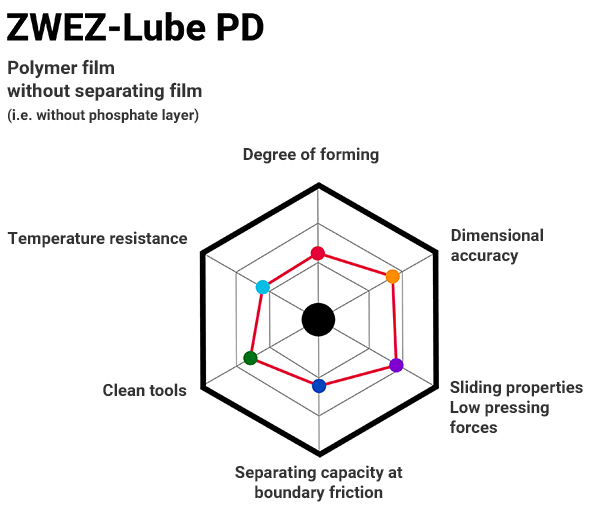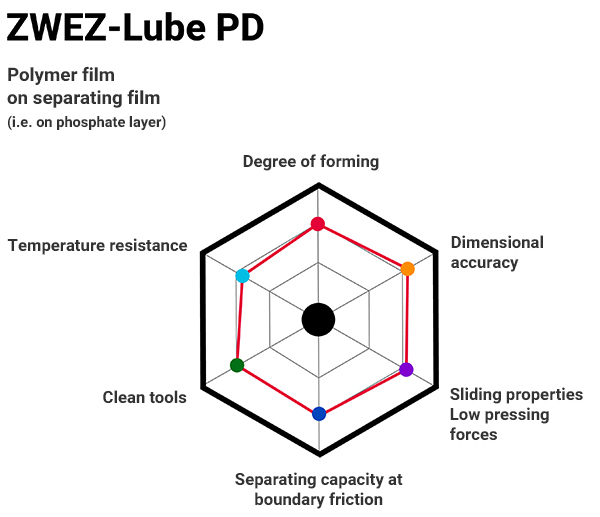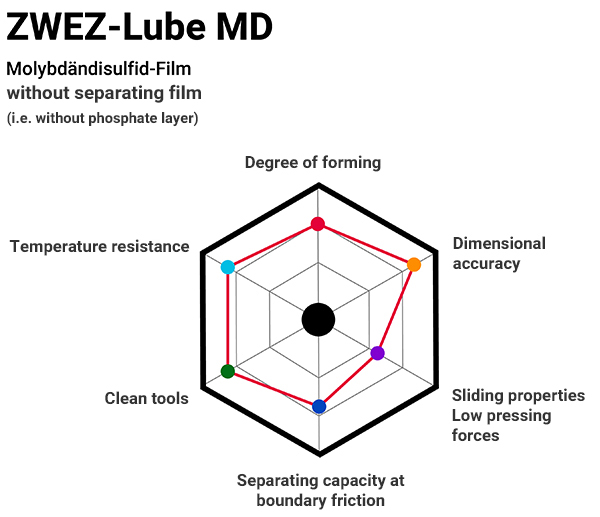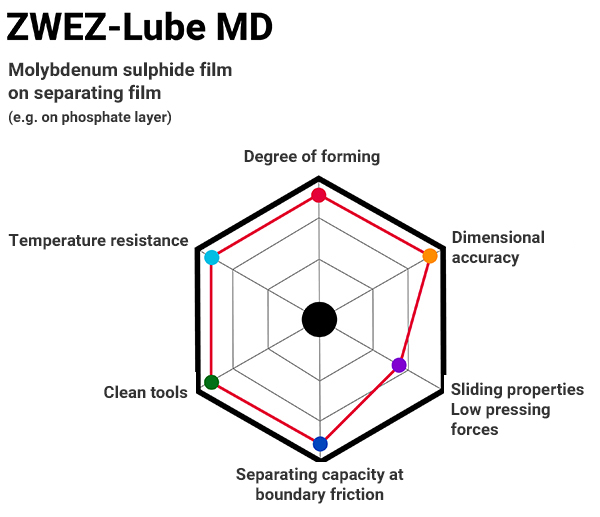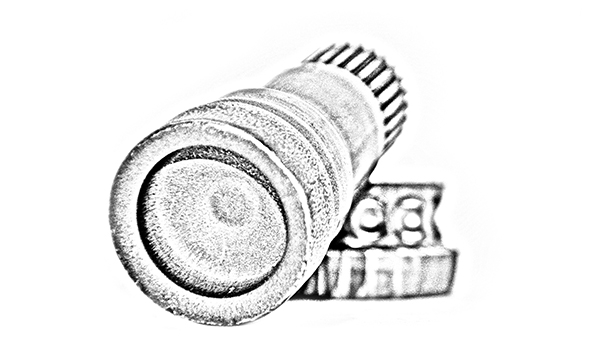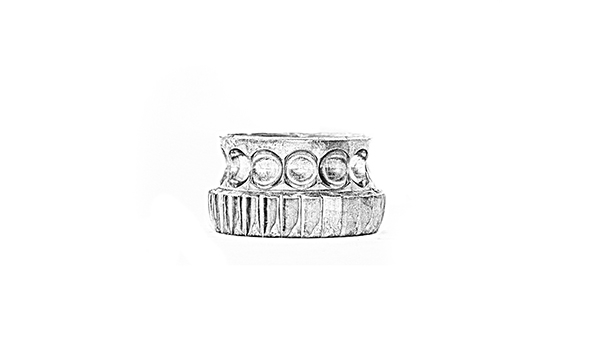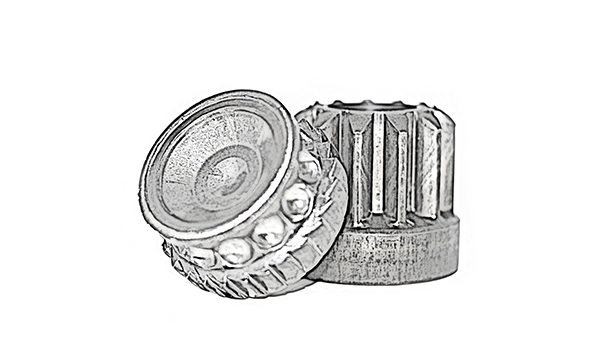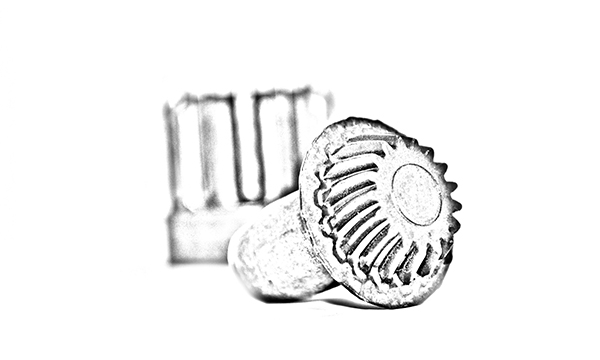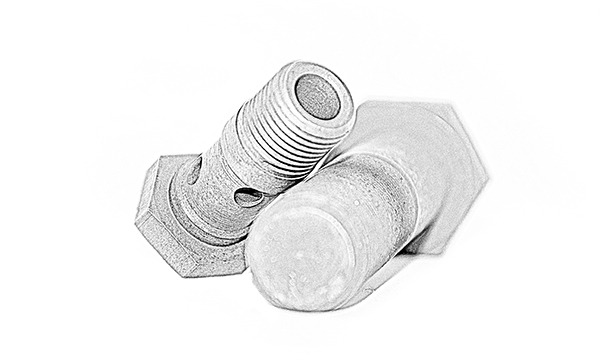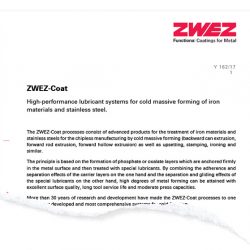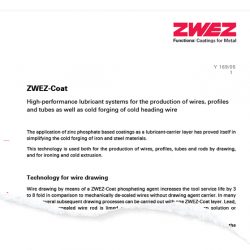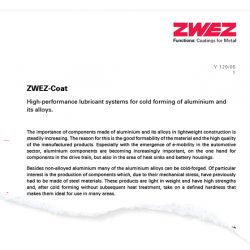Lubricating films
01.1
for cold forming with and without ZWEZ-Coat separating film.
Lubricants, in other words lubricant films: oil-free films, dry and non-slip, gain importance for forming. The better the lubricating film, the higher the possibility to apply a thinner layer of phosphate or even to dispense with it completely.
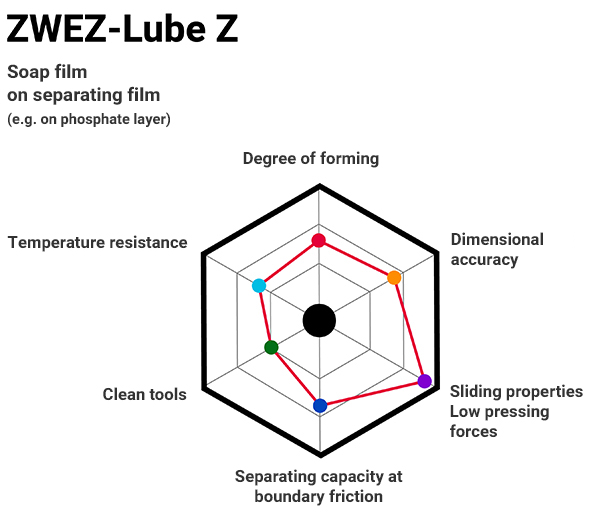
Historically, the first lubricating film used on the phosphate layer was stearate soap. This was the combination that was used as a starting point for the invention. Even today, soap film is still predominant in such processes. As the soap films became more efficient, it was possible to significantly reduce the phosphate layer. Since a soap film can only be formed on a phosphate layer, the phosphate layer cannot be dispensed with in the future.
As a current innovation in the field of lubricating films, the last few years have seen the introduction of polymers as a collective term for organic compounds on a wax-like basis. Initially as an alternative to the soap lubricating film, later also as a coating directly on the metal without the phosphate layer. i.e. better performance and significant advantages due to the largely unlimited bath life compared to the soap film.
Defined as lubricants based on inorganic minerals with a lamellar, i.e. structurally effective, layer lattice. These are aqueous dispersions containing molybdenum disulphide and/or graphite. Due to the inorganic contents, these films are extremely resistant to pressure, temperature and surface expansion. Another advantage is that there are no residues on the tools.
Simulation of a reshaping with ZWEZ- lubricating films
Simulated with EESY-2-form from CPM GmbH.
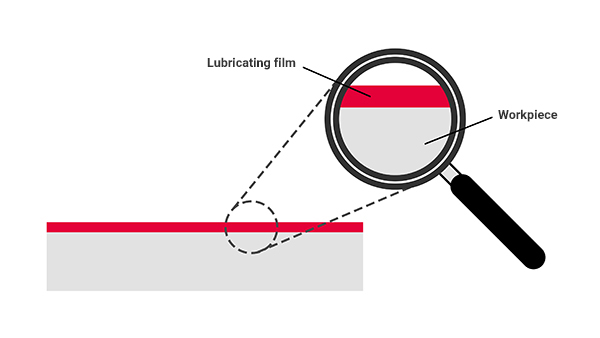
Application of all ZWEZ lubricating films is carried out by immersion, flooding or spraying. After forming, the films remain on the parts as temporary corrosion protection or can be rinsed off. The ZWEZ-Lube films do not contain any heavy metals or other substances problematic for the environment.
The ZWEZ films are selected on the basis of the type of forming, the forming temperature and the respective load.
Procedure
- Degreasing
- Rinsing
- Pickling
- Rinsing
- Activating
- Phosphating
- Rinsing
- Neutralising
-
Lubricant coating
